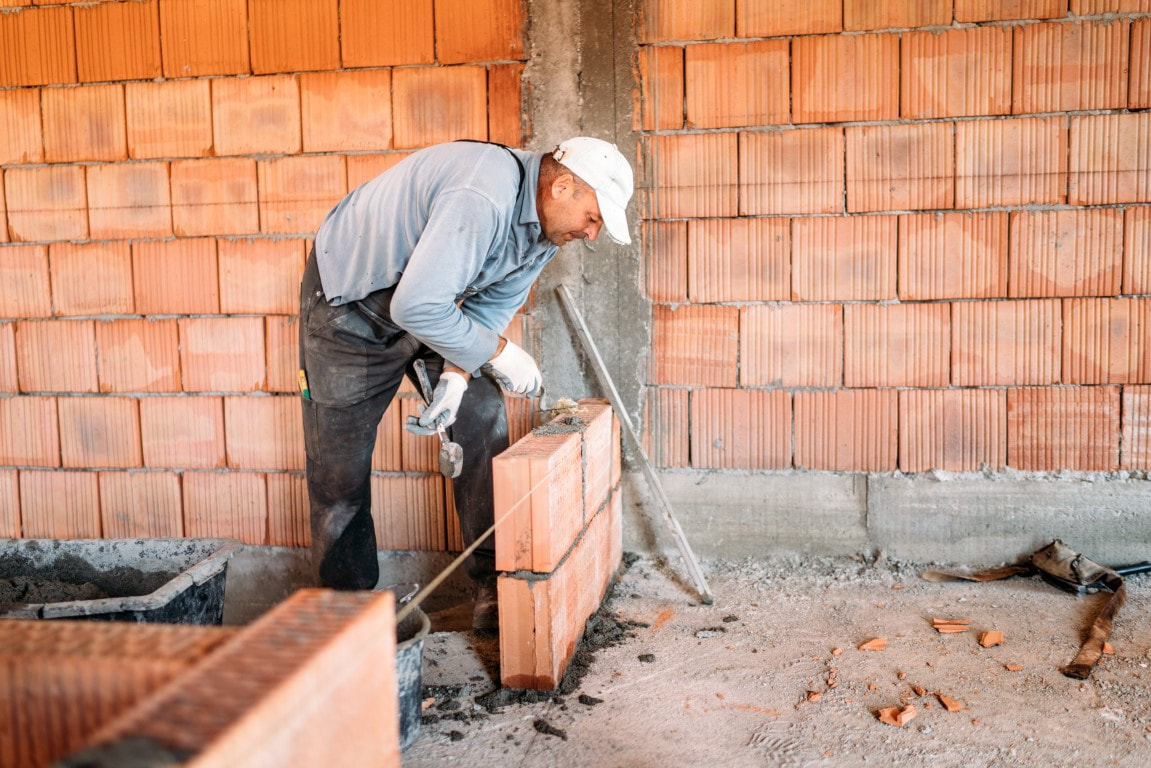Chimney Flashing and Cap Repair: Protect Your Home from Elements
Chimney Flashing and Cap Repair: Protect Your Home from Elements
Blog Article
Unlocking the Keys of Lasting Stonework Construction Practices for Eco-Friendly Buildings
In the realm of modern building, the quest of sustainable methods has become paramount. Among the myriad techniques to environmentally friendly structure, lasting masonry building and construction attracts attention as a tried and true and sturdy approach that holds a wealth of untapped capacity. From the selection of products to cutting-edge building and construction techniques, the tricks to achieving sustainability within masonry construction are complex and fascinating. By checking out the advantages, products, techniques, and future fads of lasting stonework, a much deeper understanding of how these methods can shape the future of green buildings emerges.
Advantages of Lasting Masonry Building And Construction
Accepting sustainable masonry construction methods not just decreases ecological effect but also offers lasting financial benefits to home builders and communities. By using materials like recycled blocks, obstructs, and rocks, building contractors can considerably lower the carbon footprint of their tasks while promoting resource efficiency. In addition, lasting masonry building techniques, such as proper insulation and thermal mass properties, can enhance energy effectiveness within buildings, resulting in decreased functional expenses gradually.
Additionally, the resilience and strength of stonework structures contribute to long-lasting economic advantages. Structures built utilizing lasting masonry techniques frequently require less maintenance and repair service, converting to cost savings for home builders and homeowner. The long life of masonry products likewise guarantees that frameworks stay secure and safe and secure, decreasing the requirement for regular restorations or substitutes.
Eco-Friendly Masonry Materials
Utilizing environmentally friendly masonry materials is an essential action in the direction of boosting the sustainability of building practices and minimizing environmental influence while making the most of long-term economic benefits. Sustainable stonework products are sourced, produced, and used in a fashion that decreases total ecological impact. Lasting concrete obstructs include recycled accumulations and may include better insulation properties, contributing to power effectiveness in structures.
In addition, natural materials like adobe, rammed earth, and straw bundles give exceptional thermal mass residential or commercial properties, lowering the demand for home heating and cooling power. These materials are often locally available, promoting regional economies and minimizing transportation-related carbon emissions. By picking environmentally friendly masonry materials, construction projects can considerably minimize their environmental footprint and add to the development of much healthier, extra sustainable constructed settings.
Energy-Efficient Stonework Strategies
Power performance plays an essential role in enhancing the sustainability of masonry building and construction methods. By implementing energy-efficient stonework strategies, building contractors can significantly decrease the overall power consumption of a building, causing reduced operational prices and a smaller environmental footprint. One vital energy-efficient masonry method is the usage of thermal mass, which involves including dense products like concrete or brick into the building's structure to soak up and store warmth. page This helps control interior temperature levels, reducing the requirement for mechanical home heating and cooling down systems.

Developments in Sustainable Masonry
Current developments in lasting stonework methods have brought around innovative methods that are reshaping the building and construction industry. One such advancement is the growth of self-healing concrete, which utilizes germs installed within the concrete to recover fractures autonomously. This breakthrough not just decreases maintenance prices but also enhances the toughness of masonry frameworks, contributing to their sustainability.
One more notable development is making use of recycled aggregates in stonework construction - masonry contractor. By incorporating materials such as smashed ceramic waste or recycled glass into concrete blends, home builders can minimize the ecological impact of construction jobs while keeping architectural integrity. This technique not only diverts waste from land fills but also preserves all-natural resources, making it a vital advancement in sustainable stonework building and construction
Moreover, the assimilation of digital design devices, such as Structure Details Modeling (BIM), is changing the way stonework structures are prepared and constructed. BIM permits even more exact computations, minimized product wastage, and improved power effectiveness, eventually resulting in more sustainable building techniques. These technologies jointly represent an encouraging future for lasting stonework building in the age of environmentally friendly click for source buildings.
Future Trends in Stonework Sustainability
With the cutting-edge strides made in lasting stonework techniques, the future fads in masonry sustainability are poised to more change the building and construction market. Among the key patterns forming the future of stonework sustainability is the boosted combination of technology. Improvements such as Structure Details Modeling (BIM) and online fact simulations are being used to enhance masonry construction procedures, causing lowered material waste and improved energy performance in structures.
Additionally, the advancement of novel lasting materials is readied to play a substantial role in enhancing the eco-friendliness of masonry construction. masonry contractor. Innovations like self-healing concrete, recycled aggregates, and bio-based binders are getting grip for their capability to decrease ecological impact while preserving architectural stability

Final Thought
In verdict, lasting masonry construction techniques supply countless benefits for environmentally friendly buildings. masonry contractor. Developments in lasting masonry are constantly being created to even more enhance the environmental efficiency of buildings.
Report this page